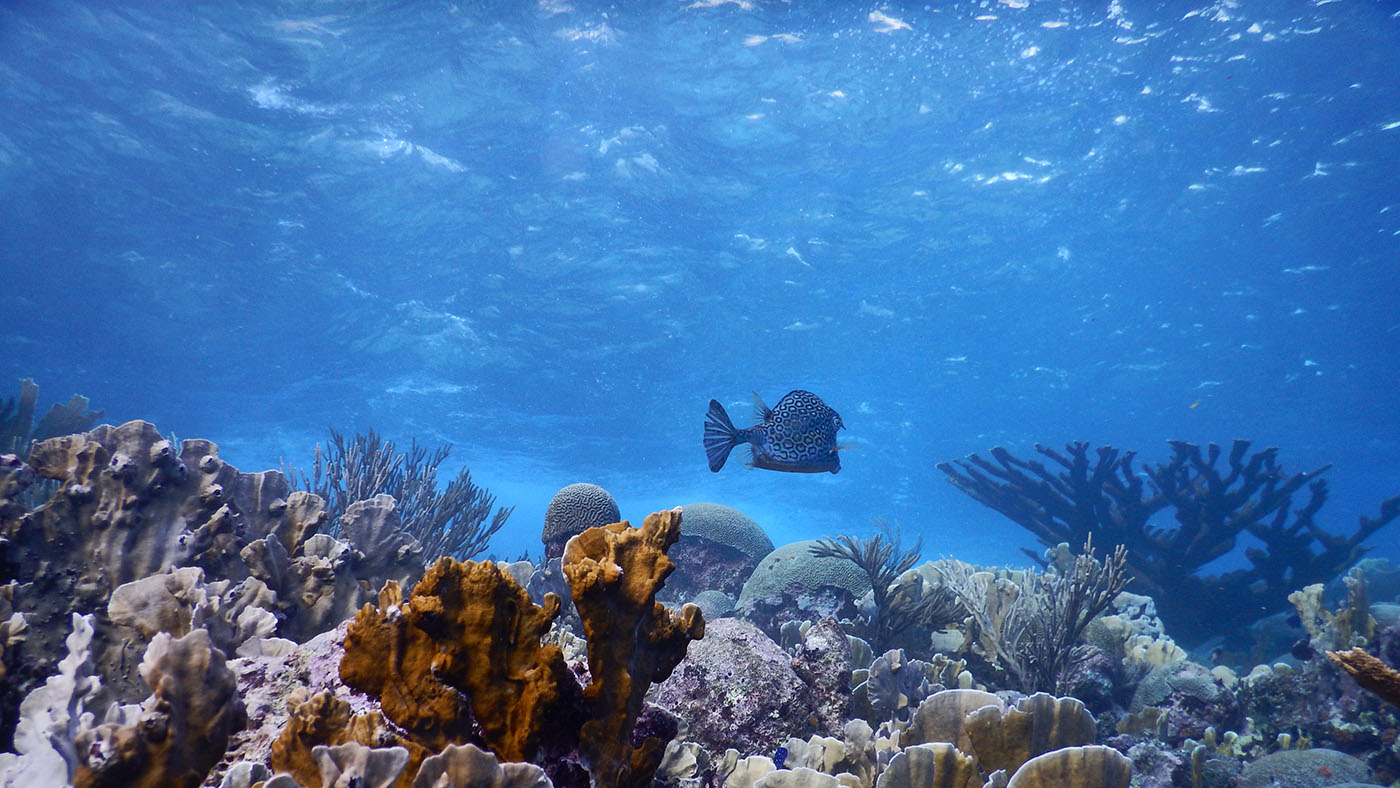
© Lisa Röpke / ZMT
Corals – Witnesses to the Climate Emergency
They are the archives of the oceans. Corals are a great indicator of how much human activities affect our oceans.
Funded by the Franco-German fellowship program „Make Our Planet Great Again“ researchers in the U Bremen Research Alliance are studying the extent of global warming in tropical waters.
The oldest corals under investigation at the ZMT by Dr. Henry Wu are 100,000 years old
The forearm-thick whitish drill core held by Dr. Henry Wu of the Leibniz Centre for Tropical Marine Research (ZMT) has come a long way. It originates from a stony coral from the coastal region off Rotuma, an island in the Republic of Fiji, more than 15,000 kilometers from Bremen. The oldest corals being examined by the paleo-climatologist are more than 100,000 years old. In the course of their lives, they have accumulated a vast amount of information.
Corals grow on average a few millimeters per year. They thrive best in clean water and live up to 50 meters below the surface of the sea, where sunrays can still reach them. Just like the growth rings of trees, the micro samples from their calcareous skeleton tell of changing environmental conditions: temperature fluctuations, the amount of rainfall, ocean acidification, and salinity – and they do so with month-to-month precision.
“If we know the past, we can better predict the future.”
Wu is using these archives of the ocean within the context of his five-year research project. “Climate has always been changing naturally. We want to know: How profound were these changes? What impact has industrialization had since the beginning of the 19th century?” says the researcher. “If we know the past, we can better predict the future.”
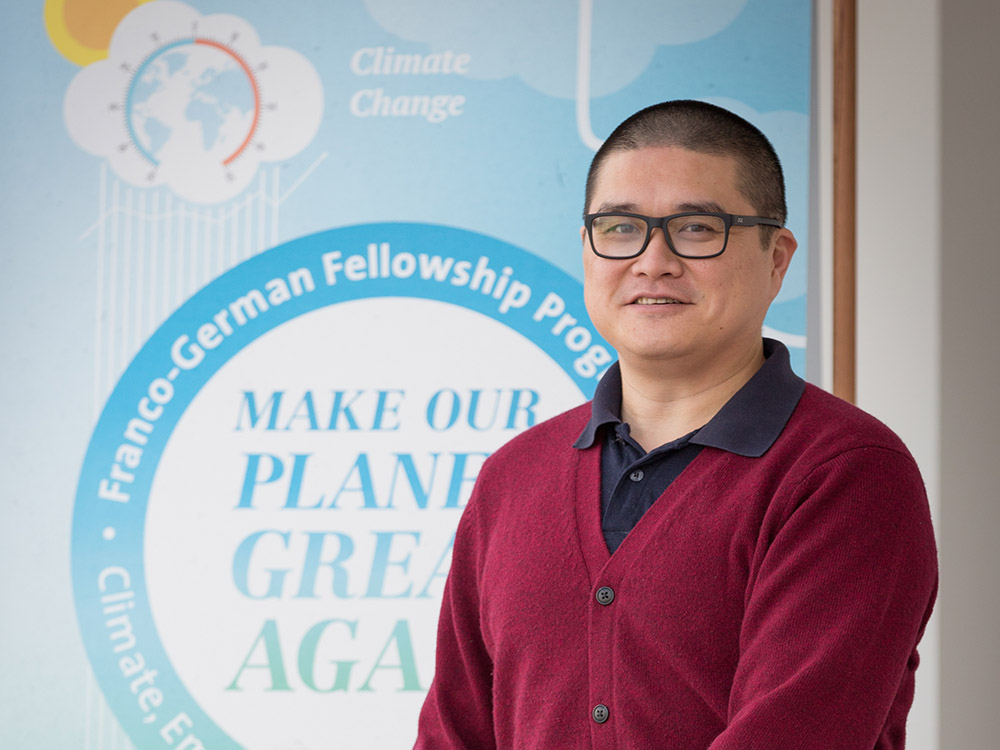
© Jens Lehmkühler / Universität Bremen
The 40-year-old has named the project OASIS. The acronym stands for “Witnesses to the Climate Emergency: Ocean acidification crisis and global warming observations from tropical corals.” The title also has a literal meaning: “For me, coral reefs are like oases in the desert: They are places full of life.” Nowhere in the oceans do so many different species exist as in tropical coral reefs – it is estimated that there are one million. Not only are they a significant ecosystem, but they are among the most beautiful and spectacular habitats on earth.
The fact that Wu and his team are able to explore these threatened oases also has to do with Donald Trump. The U.S. president inadvertently created the political conditions for OASIS. As a response to the U.S.’s withdrawal from the Paris Climate Agreement, French President Emmanuel Macron founded the “Make Our Planet Great Again” research initiative in 2017. It was supported by the Federal Ministry of Education and Research (BMBF) and the German Academic Exchange Service (DAAD). In Germany, a jury of experts from the DAAD selected 13 projects, including Wu’s project at the ZMT, which is being funded with one million euros in the area of “earth system research.”
“We complement each other very well and benefit from sharing research infrastructures and expertise here at this location.”
For this project, Wu is collaborating with colleagues from the Center for Marine Environmental Sciences (MARUM) at the University of Bremen and the Alfred Wegener Institute (AWI) in Bremerhaven. Like the ZMT, both institutions belong to the U Bremen Research Alliance, which was founded in 2016 and which connects the University of Bremen and the eleven non-university research institutes in the state of Bremen. “We complement each other very well and benefit from sharing research infrastructures and expertise here at this location,” says the researcher.
The oceans absorb about 90 percent of the excess heat generated as the Earth becomes warmer due to climate change. They also absorb around one-third of the greenhouse gas carbon dioxide (CO2). Excess CO2 reacts with water to form carbonic acid, lowering the pH of seawater. The more acidic environment makes it more difficult for calcifying organisms such as some plankton species, mussels, and corals to build their calcium carbonate skeleton. These relationships are well known. However, what is less known is how ocean acidification affects the tropics in practice; there is a lack of long-term observations.
The extent to which the pH of seawater has changed can be determined by analyzing boron isotopes in coral drill cores. Boron is a natural component of seawater, and corals absorb it as they form their calcium carbonate skeleton. The pH value determines the ratio of boron isotopes incorporated into the coral skeleton. However, the researchers want to determine not only the pH changes before and since the Industrial Revolution, but also the associated changes in sea surface temperature and water chemistry. This is happening worldwide in regions of the Atlantic, Pacific, and Indian Oceans. Research locations include Indonesia, the Andaman Islands in India, Fiji, Cuba, and Costa Rica.
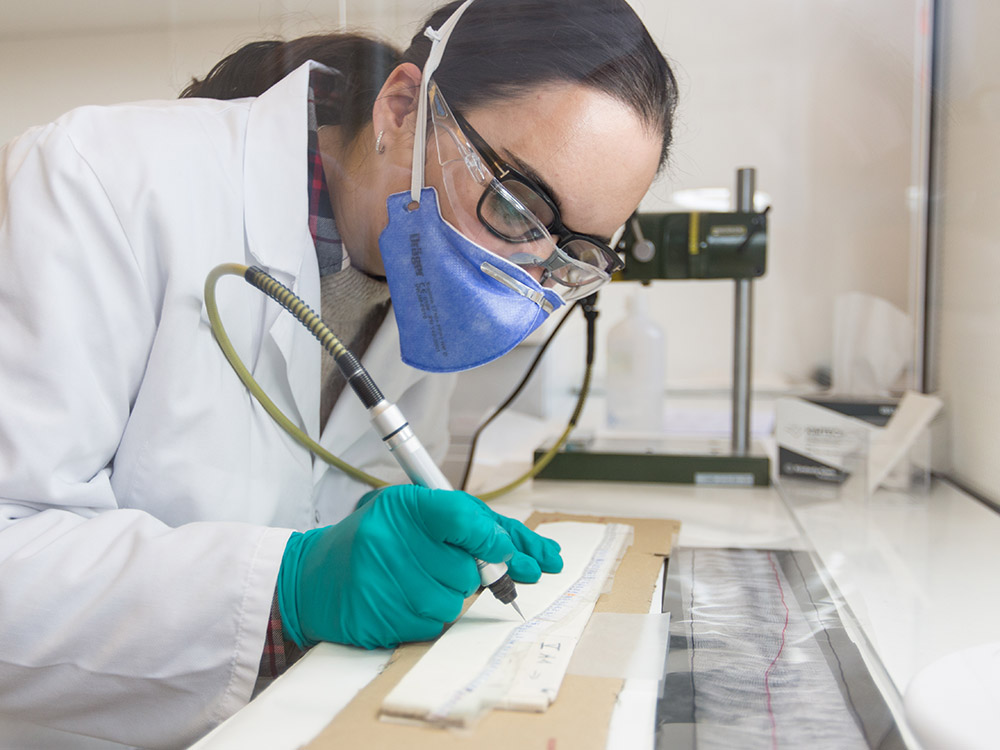
© Jens Lehmkühler / Universität Bremen
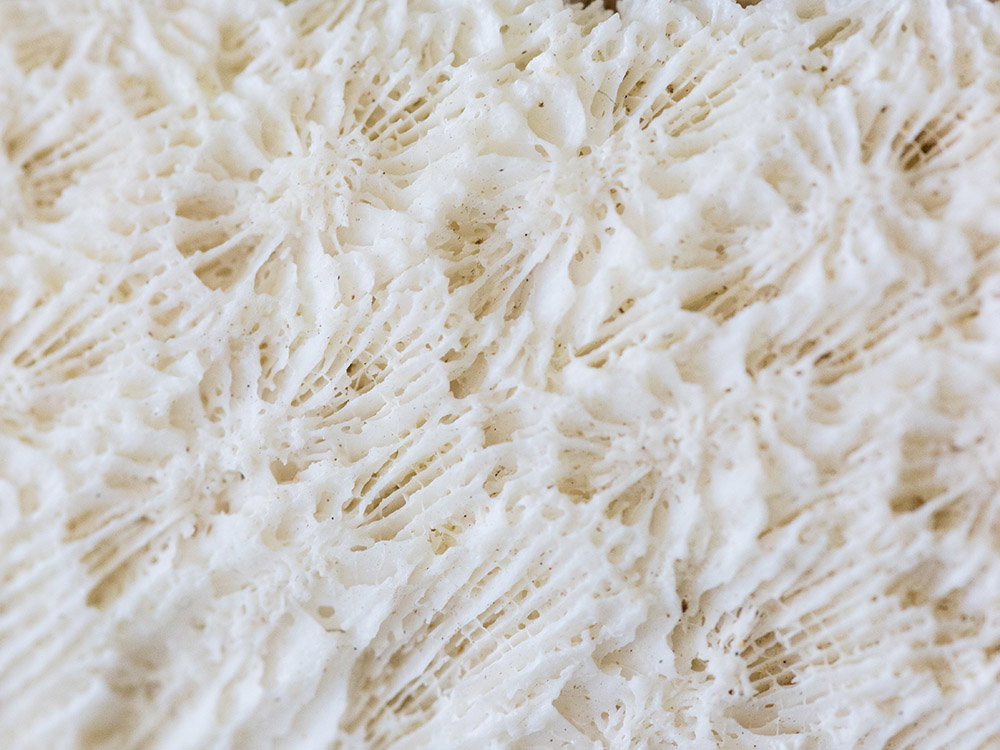
© Jens Lehmkühler / Universität Bremen
Isotopic analysis of the calcium carbonate skeleton is carried out in the laboratory of Prof. Simone Kasemann from MARUM, a complex procedure that requires a cleanroom. In the AWI laboratories, Henry Wu and Prof. Jelle Bijma examine coral drill cores for trace elements such as lithium, boron, magnesium, and barium. “At the ZMT, our expertise is in the field of ecology,” explains the climate researcher.
Henry Wu, who was born in Taiwan, knows MARUM very well: It was his first workplace in Germany after completing his studies and PhD in the USA. Why did he leave this country, which is praised by so many researchers and scientists? “When I had the opportunity to come to Bremen as a postdoctoral researcher, I didn’t hesitate. The marine, polar, and climate research facilities in Bremen have an excellent reputation all over the world.” After a temporary period at the French National Centre for Scientific Research (Centre national de la recherche scientifique, CNRS) in Paris, he returned to Bremen in 2017, this time to the ZMT. There he leads the Coral Climatology junior research group.
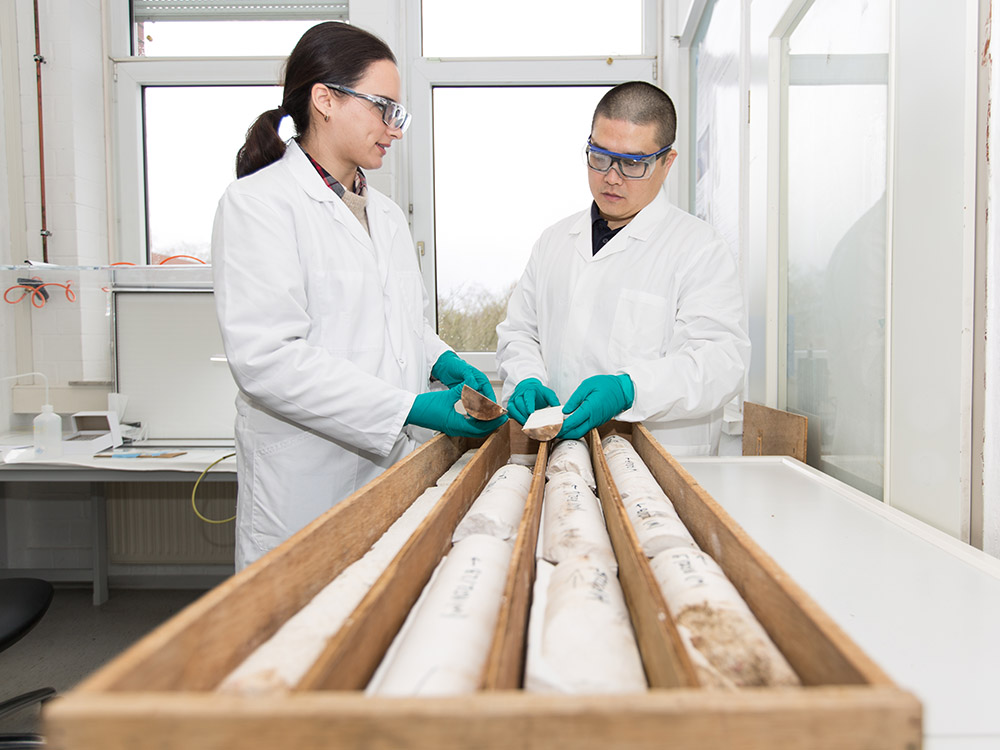
© Jens Lehmkühler / Universität Bremen
1.5 degrees Celsius on average: That is how much the oceans have warmed since the 19th century.
In addition to the institutions of the research alliance, OASIS also involves international partners from a wide range of scientific disciplines from the USA, Puerto Rico, and New Caledonia, some of whom are contributing their own drill cores to the project. “For sustainable research, we use existing samples, as we did with the cores from Rotuma,” Wu tells us. When new cores are drilled, the holes in the corals are filled with concrete to protect them against microorganisms and animals. This allows the corals to continue to grow unaffected.
In previous projects, Henry Wu has already worked on corals and the effects of climate change on reefs. His findings so far are not encouraging. The oceans have warmed considerably since the 19th century, by an average of 1.5 degrees Celsius. At the same time, the oceans have become more acidic, the pH value has dropped by 0.2. “That is huge amounts of CO2 that have caused this effect,” says Wu.
“I have Gigabytes of data proving the warming of the oceans caused by humans.”
In recent times, corals have never been exposed to similar stresses. Today’s increased water temperatures are causing coral bleaching and the death of corals. “The scale and speed at which they are dying is unprecedented,” Henry Wu points out. “It is depressing to witness.” If the corals die, this has far-reaching negative consequences for the entire ecosystem with its flora and fauna. Yet, as ocean acidification progresses, there will also be a few individual winners. Certain stony corals are more robust, they are more likely to adapt. “Diversity is decreasing, though; there’s no doubt about that.”
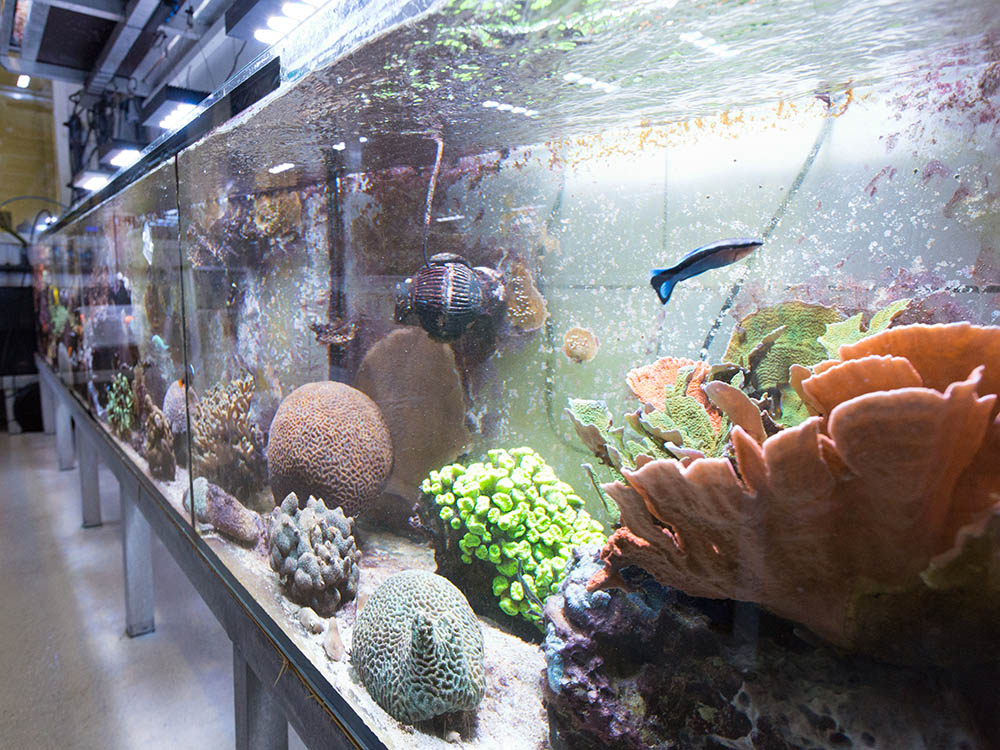
© Jens Lehmkühler / Universität Bremen
So, there is no doubt that climate change is happening, even though some people are still arguing against it. These people can convince themselves of the opposite with him, Henry Wu emphasizes. “I have Gigabytes of data proving the warming of the oceans caused by humans.”
This article comes from Impact – The U Bremen Research Alliance science magazine
The University of Bremen and twelve non-university research institutes financed by the federal government cooperate within the U Bremen Research Alliance. The joint work spans across four high-profile areas and thus from “the deep sea into space.” Twice per year, the Impact science magazine (in German) provides an exciting insight into the effects of cooperative research in Bremen.